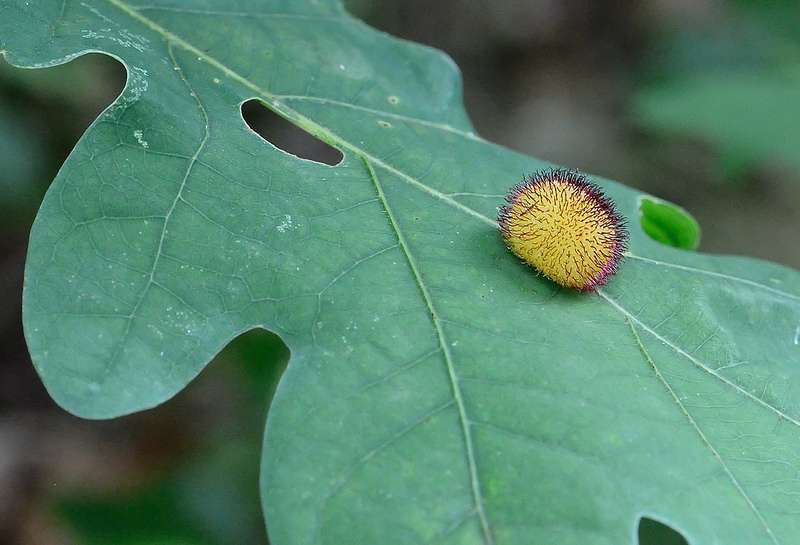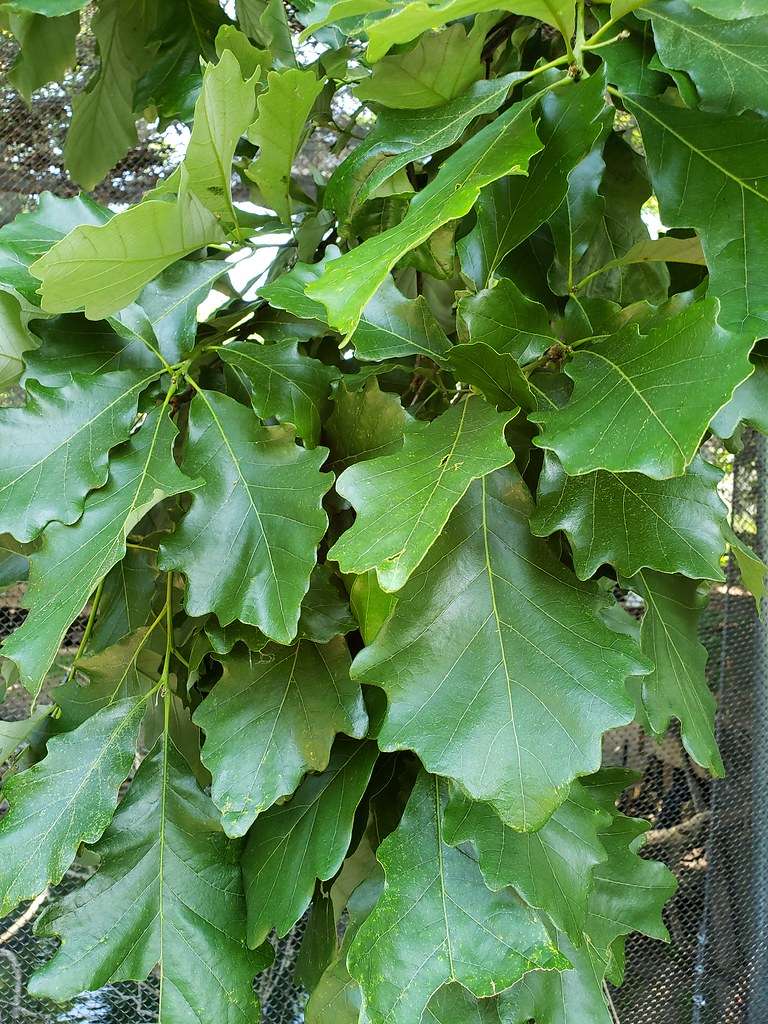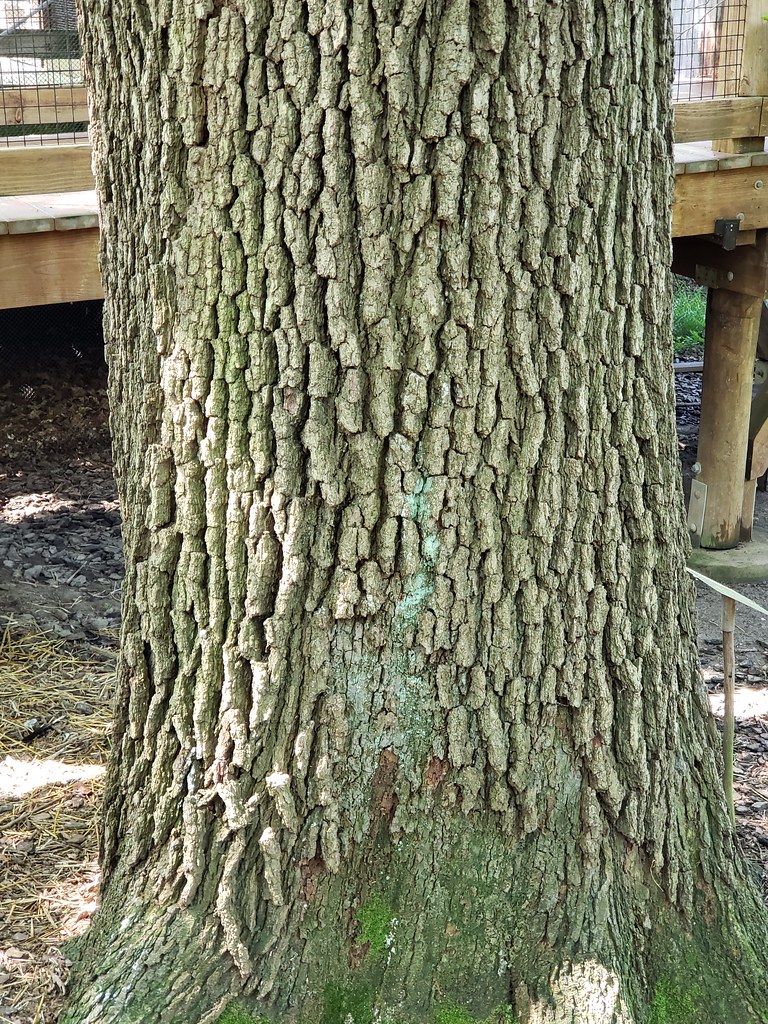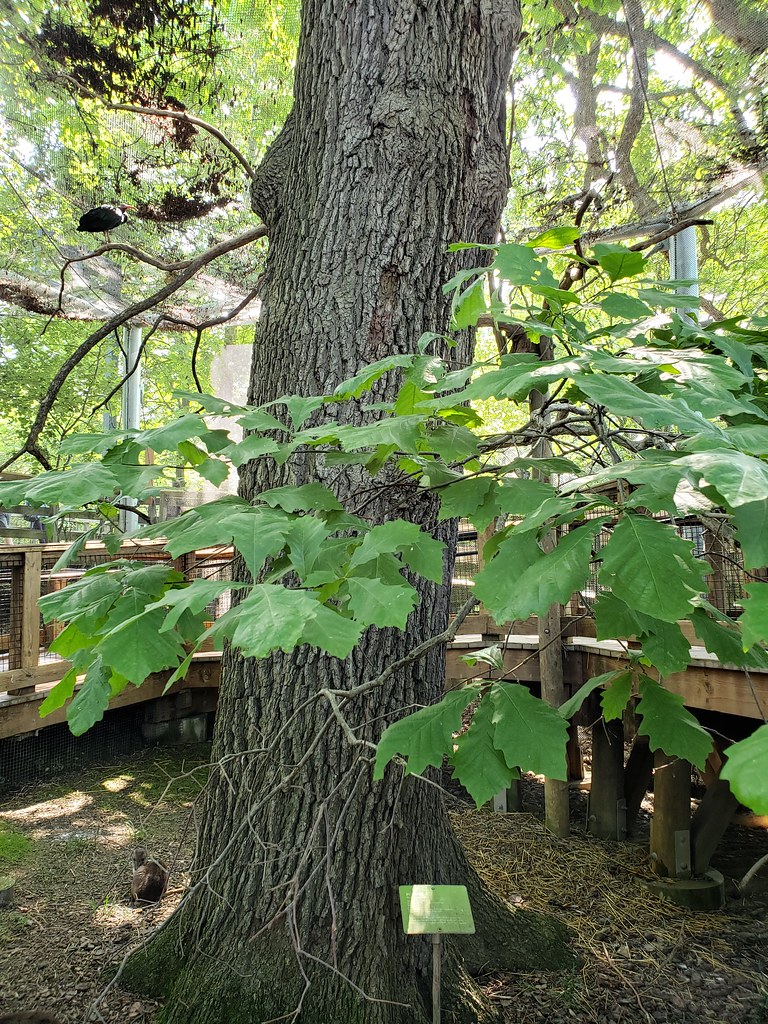














Bur Oak is rare in Maryland. Bur Oak grows in bottom lands, in rich, moist woods, and on floodplains (Brown and Brown, 1982), and also occurs on very dry sites (Stein et al., 2003).
Bur Oak is more common in the midwestern and plains states than in the East. It grows farther north than any other oak (Stein et al., 2003).
The features most salient for identification purposes are the leaves, which have "5-7 pairs of blunt or rounded lobes separated by deep, rounded sinuses, the middle pair of sinuses the deepest, the upper ones more shallow, the broader terminal portion of the blade with a rounded or 3-lobed apex...."; and the acorn cup, which is "composed of large, tomentose [hairy], imbricated [shingle-like] scales covering one-third to nearly all of the nut, the upper scales tapering to long, awn-like tips, forming a fringe from whence the word Bur Oak is derived" (Brown and Brown, 1972). The leaves have a fine, dense hairiness below.
The state champion Bur Oak can be found at the Baltimore Zoo.
Host plant for various butterfly species including Banded Hairstreak.
Host plant for various moth species including Banded Tussock Moth (Database of World's Lepidopteran Host Plants).
There are 19 records in the project database.
| GA | AL | WA | FR | CL | MO | HO | BA | BC | HA | CE | PG | AA | CV | CH | SM | KE | QA | CN | TA | DO | WI | SO | WO |










